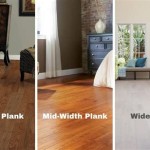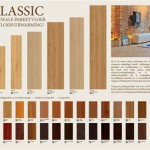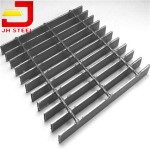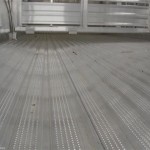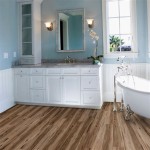Cost of Vinyl Flooring Per Square Foot: A Comprehensive Guide
Vinyl flooring has emerged as a popular choice for homeowners and businesses alike due to its durability, water resistance, and aesthetic versatility. Understanding the cost associated with vinyl flooring is crucial for budget planning and making informed decisions about flooring options. This article will comprehensively explore the factors influencing the cost of vinyl flooring per square foot, providing a detailed breakdown of materials, installation, and other related expenses.
The price of vinyl flooring can vary significantly depending on several factors, including the type of vinyl, its quality, the complexity of the installation, and the geographic location. It is essential to research and compare various options to find the most cost-effective solution that meets specific needs and aesthetic preferences. This article aims to provide clarity and guidance for navigating the complexities of vinyl flooring costs.
Types of Vinyl Flooring and Their Cost Implications
The type of vinyl flooring selected directly impacts the overall cost per square foot. Different types offer varying levels of durability, aesthetics, and ease of installation, which subsequently influence their pricing. The primary types of vinyl flooring include sheet vinyl, vinyl tiles, and luxury vinyl planks (LVP). Each type offers a unique set of benefits and considerations regarding cost.
Sheet vinyl flooring is typically the most economical option. It comes in large rolls, minimizing seams and providing a water-resistant surface ideal for bathrooms and kitchens. The cost of sheet vinyl generally ranges from $1 to $5 per square foot for the material alone. Installation costs can vary, but are usually straightforward, further contributing to its affordability.
Vinyl tiles are another popular choice, offering more design flexibility than sheet vinyl. They come in a variety of shapes, sizes, and patterns, allowing for customized installations. The cost of vinyl tiles typically falls between $2 and $7 per square foot for the material. Installation can be more labor-intensive than sheet vinyl, potentially increasing the overall project cost.
Luxury Vinyl Planks (LVP) and Luxury Vinyl Tiles (LVT) represent the higher end of the vinyl flooring spectrum. These products mimic the look of natural materials such as wood, stone, and ceramic tile, offering a premium aesthetic. LVP and LVT are typically thicker and more durable than standard vinyl options. Material costs for LVP and LVT can range from $3 to $10 or more per square foot, reflecting their enhanced quality and realism.
The cost differential between these types of vinyl flooring reflects the materials used in their construction, the complexity of their manufacturing processes, and the level of realism they achieve in replicating natural materials. When evaluating options, it is crucial to consider the long-term value and potential lifespan of each type, as higher-priced options may offer superior durability and longevity, ultimately proving more cost-effective in the long run.
Factors Influencing Installation Costs
Installation costs contribute significantly to the overall expense of vinyl flooring projects. These costs are affected by several variables, including the condition of the subfloor, the complexity of the installation pattern, and the labor rates in the specific geographic area. Accurate assessment of these factors is essential for developing a realistic budget.
Subfloor preparation is a crucial aspect of the installation process. A smooth, level, and clean subfloor is essential for ensuring proper adhesion and preventing future problems such as unevenness or buckling. If the existing subfloor is damaged or uneven, it may require repairs or replacement, adding to the overall cost. Subfloor preparation can involve patching cracks, leveling uneven areas, or even installing a new underlayment. The cost of subfloor preparation can range from $0.50 to $3 per square foot, depending on the extent of the work required.
The complexity of the installation pattern also influences labor costs. Simple installations, such as laying sheet vinyl in a rectangular room, are generally less expensive than more intricate patterns, such as herringbone or chevron, which require more precise cutting and fitting. Similarly, installing vinyl tiles or planks in a complex room with multiple angles and corners will increase the labor time and, consequently, the cost. Installation costs typically range from $1 to $5 per square foot, depending on the complexity of the project.
Geographic location plays a significant role in determining labor rates. Areas with a higher cost of living typically have higher labor rates for flooring installers. Obtaining multiple quotes from local contractors is crucial for understanding the prevailing rates in the area and ensuring a competitive price. Online resources and local directories can be valuable tools for identifying qualified and reputable installers.
DIY installation is another option to consider, particularly for those with experience in home improvement projects. Installing vinyl flooring as a DIY project can save on labor costs, but it requires careful planning, attention to detail, and the appropriate tools and equipment. Improper installation can lead to problems such as bubbling, uneven seams, and reduced durability, potentially negating any cost savings. Therefore, it is essential to carefully assess one's skills and experience before attempting a DIY installation.
Additional Expenses and Considerations
Beyond the cost of materials and installation, several additional expenses should be factored into the overall budget for a vinyl flooring project. These costs can include the removal and disposal of existing flooring, the purchase of necessary tools and supplies, and potential costs associated with moving furniture. Overlooking these expenses can lead to budget overruns and unexpected financial strain.
The removal and disposal of existing flooring can add to the overall cost, especially if the existing flooring is difficult to remove or requires specialized disposal methods. Some materials, such as asbestos-containing tiles, require professional removal to ensure safety and compliance with environmental regulations. The cost of removal and disposal can range from $0.50 to $2 per square foot, depending on the type of flooring and the complexity of the removal process.
The purchase of necessary tools and supplies is another expense to consider. While some tools, such as a utility knife and measuring tape, may already be on hand, others, such as a flooring roller, tapping block, and adhesive, may need to be purchased. The cost of these supplies can range from $50 to $200, depending on the scope of the project and the specific tools required.
Moving furniture can also incur costs, especially if heavy or bulky items need to be moved. While some homeowners may be able to move furniture themselves, others may need to hire professional movers. The cost of moving furniture can vary depending on the amount of furniture and the distance it needs to be moved. It's important to protect furniture that remains in the area being worked on with drop cloths or plastic sheeting.
Considering future maintenance costs is also crucial. While vinyl flooring is generally low-maintenance, it is important to have a plan for regular cleaning and occasional repairs. Regular sweeping and mopping are essential for preventing dirt and debris from scratching the surface. In the event of damage, such as scratches or gouges, repair kits are available for minor repairs. More severe damage may require professional repair or replacement of the affected area.
Warranties are crucial for protecting the investment in vinyl flooring. Verify that the manufacturer offers adequate warranties and consider any exclusions. Understanding the terms of the warranty can provide peace of mind and protect against unexpected costs associated with defects or premature wear.
When budgeting for a vinyl flooring project, it is crucial to obtain detailed quotes from multiple contractors, including all materials, labor, and any additional expenses. Compare the quotes carefully and ask for clarifications on any ambiguous items. A written contract should be obtained before any work begins, outlining the scope of the project, the payment schedule, and any warranties or guarantees.
Budgeting is a crucial step in any home improvement project. By researching different types of vinyl flooring, understanding installation costs, and accounting for additional expenses, homeowners can make informed decisions and avoid financial surprises. A well-planned budget will help ensure a successful vinyl flooring project that enhances the beauty and functionality of the space for years to come.

Fixr Com Cost To Install Vinyl Flooring

Fixr Com Cost To Install Vinyl Flooring

Fixr Com Cost To Install Vinyl Flooring

Fixr Com Cost To Install Vinyl Flooring

The Complete Guide To Flooring Costs By Type Twenty Oak

The Complete Guide To Flooring Costs By Type Twenty Oak

Cost To Install Vinyl Floors The Home Depot

Fixr Com Cost To Install Vinyl Plank Flooring S

The Complete Guide To Flooring Costs By Type Twenty Oak

Cost To Install Vinyl Floors The Home Depot


